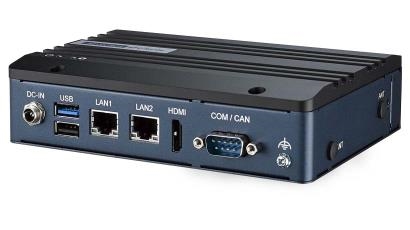
IoT technology, through deep integration of sensors, intelligent devices, and network communication, changes traditional classroom management and the teaching experience. Guangling Technology's smart classroom solution centers on IoT to move from isolated devices to a fully connected ecosystem, creating efficient, intelligent, and sustainable learning spaces. The following analyzes IoT applications in smart classrooms across three dimensions: hardware connectivity, data interoperability, and scenario intelligence.
1. Hardware connectivity: breaking vendor barriers and unified device management
IoT addresses fragmented device management and vendor incompatibility in traditional classrooms by using standard protocols and intelligent terminals to interconnect all classroom devices.
1.1 Multi-vendor device compatibility and unified platform management
Supported device types: access for over 30 device categories including projectors, air conditioners, lighting, access control, surveillance, water and power meters, and fire protection equipment, with compatibility for mainstream manufacturers such as Hikvision and Dahua.
Protocol adaptation: supports MQTT, HTTP, Modbus and other communication protocols, enabling unified management without replacing existing equipment.
Remote control: teachers or administrators can use interactive panels, mobile apps or WeChat mini programs, or a management platform to activate a single "class mode" that automatically starts the projector, adjusts lighting, and synchronizes presentation signals. Devices are automatically turned off after class to reduce standby power consumption.
1.2 Modular design for flexible teaching scenarios
Dynamic space layouts: modular desks and chairs support six teaching modes such as concentric, group clusters, and free movement to meet seminar-style classroom needs.
Intelligent linkage: timetables trigger automatic control of lights and air conditioning; access control integrates with turnstiles for seamless entry.
2. Data interoperability: building a real-time sensing network to inform teaching decisions
IoT, combined with sensors and data analytics, enables real-time collection of classroom environment, device status, and user behavior data to support teaching optimization.
2.1 Environmental data collection and energy optimization
Smart sensing: deployment of temperature and humidity sensors, illuminance sensors, and air quality monitors to collect classroom environmental data in real time.
Energy-saving linkage: lighting brightness is adjusted automatically based on illuminance; air conditioning is dynamically started or stopped according to temperature and air quality, reducing energy consumption by 25%.
2.2 Device status monitoring and fault alerts
Full lifecycle management: the system monitors device operating status in real time, such as projector lamp life and computer CPU load, and produces early warnings to shorten response time to 15 minutes.
AI security: video analysis, intrusion detection, and behavior recognition provide real-time alerts for security risks such as unauthorized entry or abnormal device operation.
2.3 Learning analytics and teaching feedback
Classroom behavior monitoring: AI cameras capture metrics like students' attention and interaction frequency to generate personalized learning reports that help teachers adjust instruction.
Knowledge heatmaps: in-class quizzes generate real-time heatmaps of student mastery to guide targeted review of difficult points.
Case example: BNBU implemented a centralized intelligent control and data collection system that reduced energy use and avoided redundant platform deployments while preserving the value of existing investments.
3. Scenario intelligence: automated policy execution to improve teaching efficiency
IoT, together with scenario-based linkage and AI algorithms, enables adaptive classroom adjustments that reduce manual intervention and improve teaching efficiency.
3.1 Scenario-triggered policies
Automatic recognition of teaching scenarios: the system uses the timetable to identify modes such as "class", "break", and "self-study" and executes preset device strategies accordingly, for example starting the projector and adjusting lights in "class mode".
Contactless attendance: electronic class plates combined with facial recognition achieve 99.2% attendance accuracy, automatically synchronizing timetables and authorizing device access.
3.2 Remote interaction and resource sharing
Dual-stream transmission: a main 4K teaching stream plus a 1080p interactive stream supports automatic switching over 5G networks, enabling 200 concurrent interactive users without delay.
Cross-campus resource reuse: the IoT platform consolidates quality course resources, achieving a 65% cross-campus resource sharing rate to support more equitable access to education.
3.3 Intelligent teaching tools
Wireless casting and multi-screen interaction: supports AirPlay and Miracast protocols for seamless connection between teacher and student devices and large classroom displays.
Cloud notes and recording: students receive board notes via official channels; 4K dual-tracking cameras automatically record classes and support on-demand playback.
4. Core value of IoT technology
Cost reduction and efficiency: unified control and intelligent maintenance reduce device failure rates by over 30% and lower manual maintenance costs.
Data-driven: the platform processes more than 100,000 device state records daily to support precise teaching decisions.
Open compatibility: supports integration with academic management systems and third-party collaboration platforms to eliminate data silos.
Green and energy efficient: intelligent control reduces energy waste and helps institutions meet carbon reduction goals.
Conclusion
IoT is reshaping the smart classroom ecosystem from device connectivity to data-driven operations and scenario intelligence. Guangling Technology's solution provides a pathway for efficient, sustainable digital transformation in education. As AI, 5G, and edge computing further converge, IoT will enable additional capabilities in smart classrooms to support both educational equity and quality.
 ALLPCB
ALLPCB







